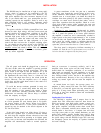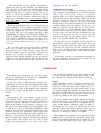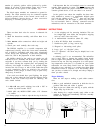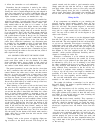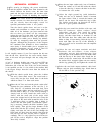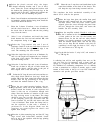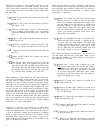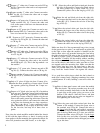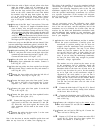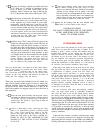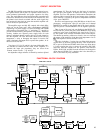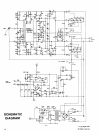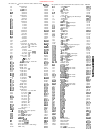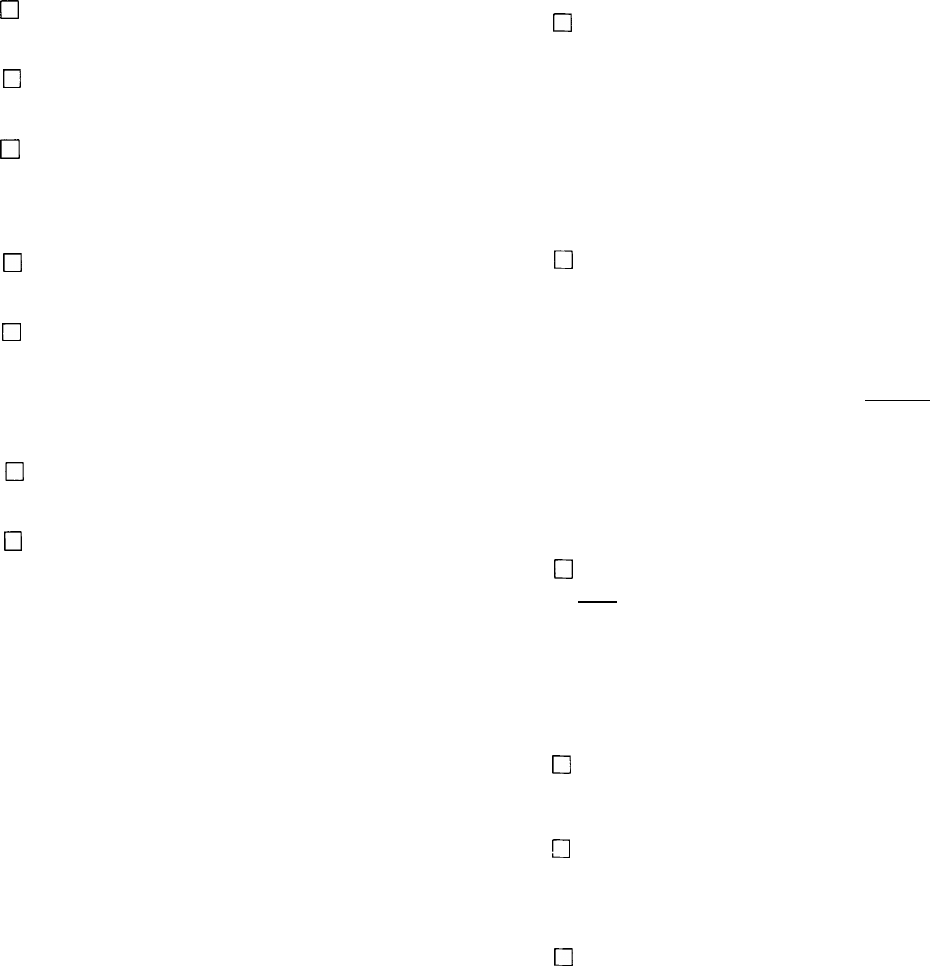
There are two gauges of wire supplied with the kit. For
While excessive heat or careless “scrubbing” with the iron
connections which pass substantial current, the heavier
can lift the circuit foil from the board, more people tend to
wire is used. Other connections need only the lighter gauge use insufficient heat, making it difficult for the solder to
wire. Connect the wires to the bottom of the module from flow smoothly around the connection. A smooth, bright
the right side,
connection is important.
23
0
Prepare a 9-1/2“r ed wire and connect one end to TS2
lug
#6.
(S-2).
24
0
Prepare a
7 1/2”
green wire and connect one end to
TBl
lug
#l.
(S-2).
25
0
Select the ‘inrush limiter’, which is a disc about the
size of a quarter. Trim the leads to
1/2"
and connect
it between
TBl
lug #2
and TB2 lug
#3.
Solder both
lugs.
31
0
Prepare an 8” black wire and an 8” red wire. Start
with the red wire
1/2"
longer at one end, and twist
these wires together throughout their length. Con-
nect the longer end of the red wire to eyelet
#l
of
the board which is to your left as you face the rear
of the module. Eyelet
#l
is the upper eyelet. Con-
nect the black wire to
eyelet
#2.
Be sure both
eyelets are securely soldered. Place these wires
down under the module.
26
0
Prepare a
7-1/2"”
white wire and connect one end to
TB2 lug
#4.
(S).
27
0
Prepare a
l-1/4”
black wire. Connect one end to
TSl
lug
#7.
(S). Connect the other end to TS2 lug
#8.
28
q
Prepare a 9” black wire. Connect one end to TS2 lug
#8.
(S-2).
32
0
Prepare an
8-1/2“black
wire, and a 7-1/2‘yellow wire.
Allow the black wire to project
1/2”
beyond the yel-
low wire, and twist these together. The black wire
connects to the upper eyelet
#2
of the circuit board
to your right. (S). Connect the yellow wire to eyelet
#l.
(S). Place this pair under the module. Now turn
the module around so the fan is toward you.
29
0
Prepare a 10-1/2” yellow wire. Connect one end to
TSl
lug
#5.
(S).
The eyelets are numbered consecutively, one to each cir-
cuit
tab visible along the edge of the board, from 3 to 10.
The small tab numbers are visible adjacent to each tab on
the underside of the board.
30
0
Twist
the red, yellow and black wires from
TSl
and
TS2 together. Also twist together the green and
white wires from
TBl
and TB2. Place both of these
wire groups
off to
the right
of the
module. Then turn
the module right side up, with the fan away from
you, and the wires extending off to the left.
When soldering to eyelets (holes) on the circuit boards, the
wires will be connected to the outside (top) of the board,
but they must be soldered securely to the circuitry on the
underside. It is best to heat the eyelet on the inner surface
while the wire is inserted from the outside. This requires an
iron with a small tip (preferably chisel shaped) and some
care on your part. It is easiest to melt a small blob of solder
on the tip, and position it at the eyelet so that the solder
blob, more than the tip itself, is heating the eyelet. If the
eyelet is first filled with solder, and the wire end is pushed
all the way through the heated eyelet first, then withdrawn
part way to expose a bit of the bare end outside the board
before the solder cools, you should have a firmly soldered
connection if it cools undisturbed.
33
0
Prepare two 7” white wires. Connect one to the
right circuit board eyelet
#8,
towards the bottom.
(S). Connect the other wire to eyelet
#6.
(S). You
may find it easier to work if the module is laid flat
on its back foam gasket. Bend these wires toward
the bottom of the fan bracket, and twist them to-
gether throughout their length.
34
0
Prepare a 13”green wire. Connect it to eyelet
#7
of
the right board. (S).
35
g
Prepare an
1l”white
wire. Connect it to eyelet
#5
of
the right board. (S). Bend this wire toward the bot-
tom of the bracket.
36
0
Prepare a 3”green wire and connect it to eyelet #lO
of the right board. (S).
Always tin a wire that is to connect to an eyelet. After
soldering, go back and check by twisting each wire, to
make sure nothing moves on the other side of the board. It
is wise to check any existing wire connected to an adjacent
eyelet, to make sure your work has not loosened it. When
connecting heavy gauge wire to the eyelets, if you get too
much solder on in the tinning process, it will be hard for the
wire to penetrate the eyelet.
37
q
Prepare a
6-1/2”
white wire and connect it to eyelet
#3
of the right board. (S).
38
q
Prepare a 13” green wire and connect it to eyelet
#7
of the left board. (S).
39
q
Prepare a
13”
white wire and connect it to eyelet
#5
of the
left
board. Bend this wire toward the bottom.
10





